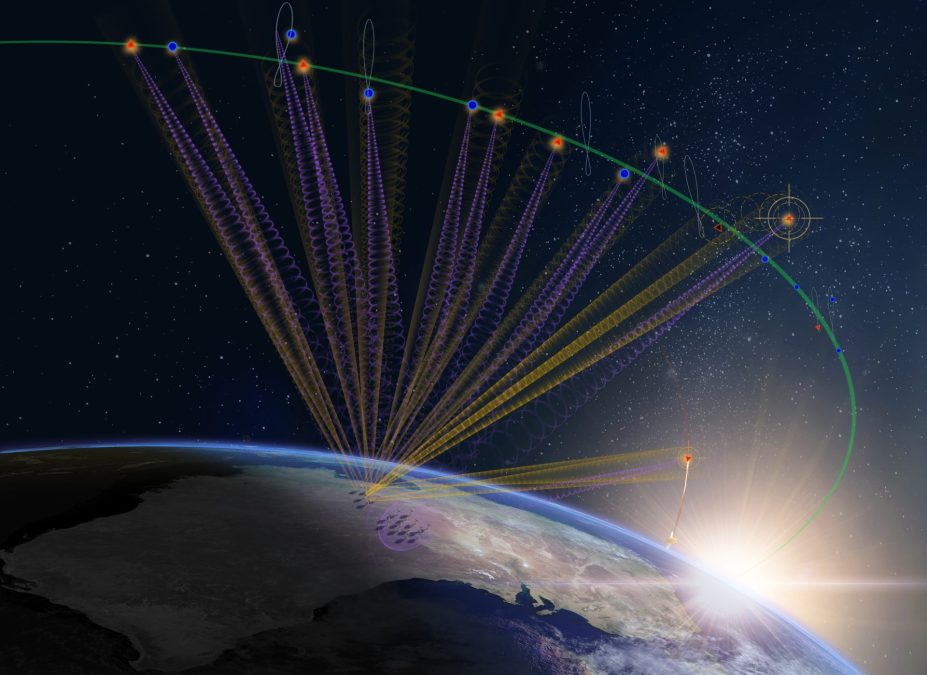Northrop Grumman awarded $200M deal for deep-space radar that will be hosted in Wales

The Space Force has awarded Northrop Grumman a $200 million contract to build its second Deep-space Advanced Radar Capability (DARC) that will be stationed in the United Kingdom, the Defense Department announced Friday.
Under development by Northrop Grumman, DARC is an all-weather, ground-based radar system designed to detect and track objects moving through geosynchronous orbit — over 22,000 miles above the Earth’s equator. Expected to serve as a key capability for the U.S. military’s space domain awareness mission, the service plans to position three radars around the world as part of the AUKUS alliance between the United States, United Kingdom and Australia.
“With a growing number of space debris and objects now populating Earth’s orbit, DARC technologies detect small space objects and satellites quickly and with highly precise orbital information. DARC also identifies adversarial threats with the potential to disrupt/deny civil and military space services, making it a vital defense technology for the Space Force,” Col. Bryon McClain, program executive officer for space domain awareness and combat power, said in a statement Aug. 26.
Contracts posted on the Defense Department’s website Friday detail that the new award to Northrop Grumman will entail “design, integration, and testing of the second DARC radar site” that will be completed by February 2030.
According to the U.K. Ministry of Defence, DARC Site 2 will be located at Cawdor Barracks in Pembrokeshire, Wales. The military installation has been home to the British Army’s electronic warfare unit — 14 Signal Regiment — since 1995. In 2016, the U.K.’s Ministry of Defence announced that the military installation would close by 2028.
However, now that it will host DARC Site 2, Cawdor Barracks will remain open and undergo redevelopment to support the radar and up to 100 personnel who will operate and maintain it, according to the MOD.
“Space plays a crucial role in our daily lives — used by everything from our mobile phones to banking services. It is also used by UK Defence to conduct vital tasks such as supporting military operations, navigating forces and gathering intelligence,” U.K. Defence Secretary John Healey said in a statement. “This new radar programme will not only enhance our awareness of deep space, but also help protect our space assets alongside our closest partners.”
The Space Force announced a trilateral agreement with the other two AUKUS nations in December 2023 that would allow the U.K. and Australia to each host and operate one of the next-generation radars within their borders. Together, the DARC radars will create a network of sensors and allow the three countries to jointly conduct space domain awareness operations.
“As the space domain rapidly evolves, we must continue taking deliberate steps to ensure our collective ability to operate safely, and our nations are uniquely positioned to provide that capability on a global scale,” Chief of Space Operations Gen. Chance Saltzman said in a statement following the announcement of the trilateral agreement.
Current ground-based radars have limited capability in tracking objects in space during the day and are often affected by weather conditions. DARC is expected to give the Space Force and its partners global 24/7 coverage to detect, track, identify and analyze objects in deep space no matter the time of day or environmental conditions.
“The DARC Site 2 award expands Northrop Grumman’s support for the U.S. Space Force’s Space Domain Awareness (SDA) capabilities in an increasingly contested domain. This site brings us closer to achieving global coverage of deep space, which is a critical mission for future security of the U.S. and its allies,” Pablo Pezzimenti, the company’s vice president of integrated national systems, said in a statement Aug. 26.
The Space Force awarded Northrop Grumman a $341 million contract in 2022 for the first DARC site, which will be located in Exmouth in Western Australia and is expected to be completed in 2026. The Space Force did not provide information as to where the third radar will be constructed in the United States, but the service has previously said all three systems will be completed by 2030.
Updated on Aug. 26, 2024, at 3:25 PM: This story has been updated to include statements from Space Force Col. Bryon McClain and Northrop Grumman’s Pablo Pezzimenti.



